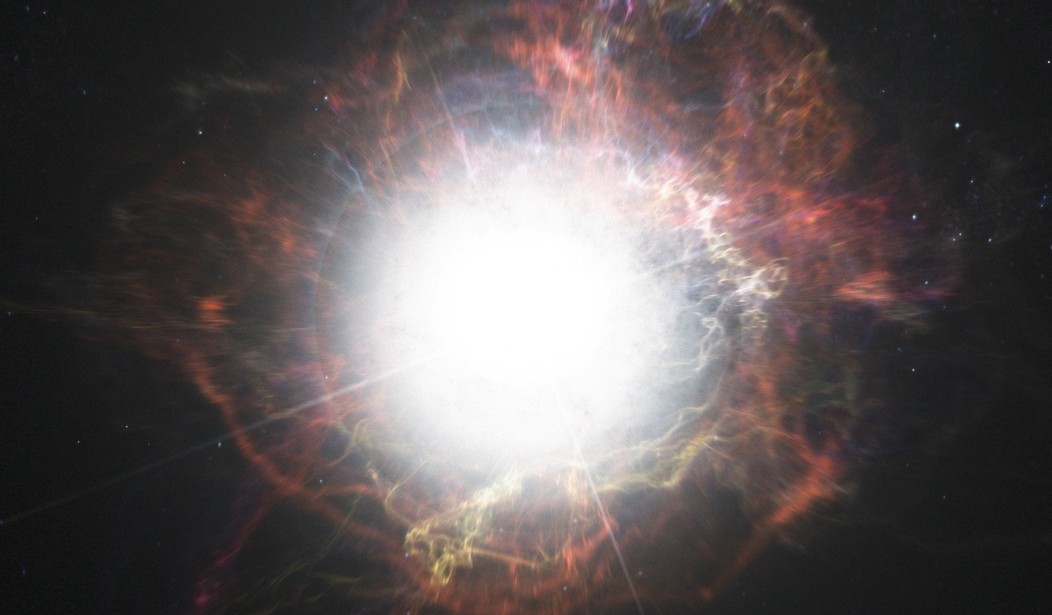We’re all familiar with Betelgeuse, right? Not the movie, and not Lori Lightfoot, but the red supergiant star in Orion’s right shoulder (left shoulder from Earth; Orion is facing us.)
You may also remember that there was a lot of excitement in 2019 when Betelgeuse dimmed drastically. Astronomers concluded that this dimming was because Betelgeuse ejected a bunch of opaque material that blocked a lot of the light.
A red supergiant is a massive star, bigger than the Sun, that’s literally running out of gas. Every star is a balancing act between the energy from fusion and gravity. As long as fusion is releasing energy, there’s enough heat to balance gravity. In a star massing less than the Chandrasekhar limit of about 1.44 times the mass of the Sun, the star eventually collapses into a white dwarf star. (That’s probably not politically correct. A mass-challenged star of no particular color?)
If the star masses more than the Chandrasekhar limit, gravity causes the stellar material to continue fusing, producing elements farther and farther up to iron and nickel. Eventually, though, the core of the star is largely iron, and the fusion of iron takes more energy than it releases. At that point, the equilibrium of fusion heat and gravitational pressure is broken. The star collapses inward at 20% or more of the speed of light; the shockwave compresses the core until the atoms collapse; and the electrons meet the protons, converting them to neutrons and neutrinos and releasing immense amounts of energy — 100 “foe“, or about 1046 Joules. That’s roughly a yield of about 1031 times the yield of the Tsar Bomba — which is so big, the comparison is a little silly.
In any case, BOOM! A type II supernova.
The unexpected dimming made big news because Betelgeuse will go boom sometime and it will be spectacular when it happens. After examining the data, astronomers concluded that it would probably happen sometime in the next 10,000 years or so.
But that was 2019. Recently, my favorite astrophysics YouTuber, Dr. Becky Smethurst of Oxford, called attention to a new paper, “The evolutionary stage of Betelgeuse inferred from its pulsation periods” by Saio et al.
Go watch Dr. Becky for the details, with animations and detailed explanations of Type II Supernovae. But the gist of the paper is that by looking at the periodic variation in Betelgeuse’s brightness, the researchers’ model suggests the coming supernova may happen in the next few decades.
There hasn’t been a supernova in our neighborhood since July 4, 1054, when Chinese astronomers observed a supernova, now labeled SN1054, that remained visible for almost two years. The remnants of that supernova are now called the Crab Nebula. (Betelgeuse is about 600 light-years from earth, so we’re well outside the 100-200 ly danger zone.)
Related: ‘Open the Pod Bay Doors, Hal.’ Amazon Locks a Man Out of His Smart Home Over Racism Allegations
Now, these are astronomers: “decades” can mean no more than 10 or 20 decades. But with luck, it will happen in our lifetimes.
This would basically be ridiculously cool, the greatest show off Earth. It would instantly be the brightest star in the sky (except for the Sun), brighter than the Moon and very likely visible in the daytime, and remain visible for a year or more, like SN1054.










Join the conversation as a VIP Member